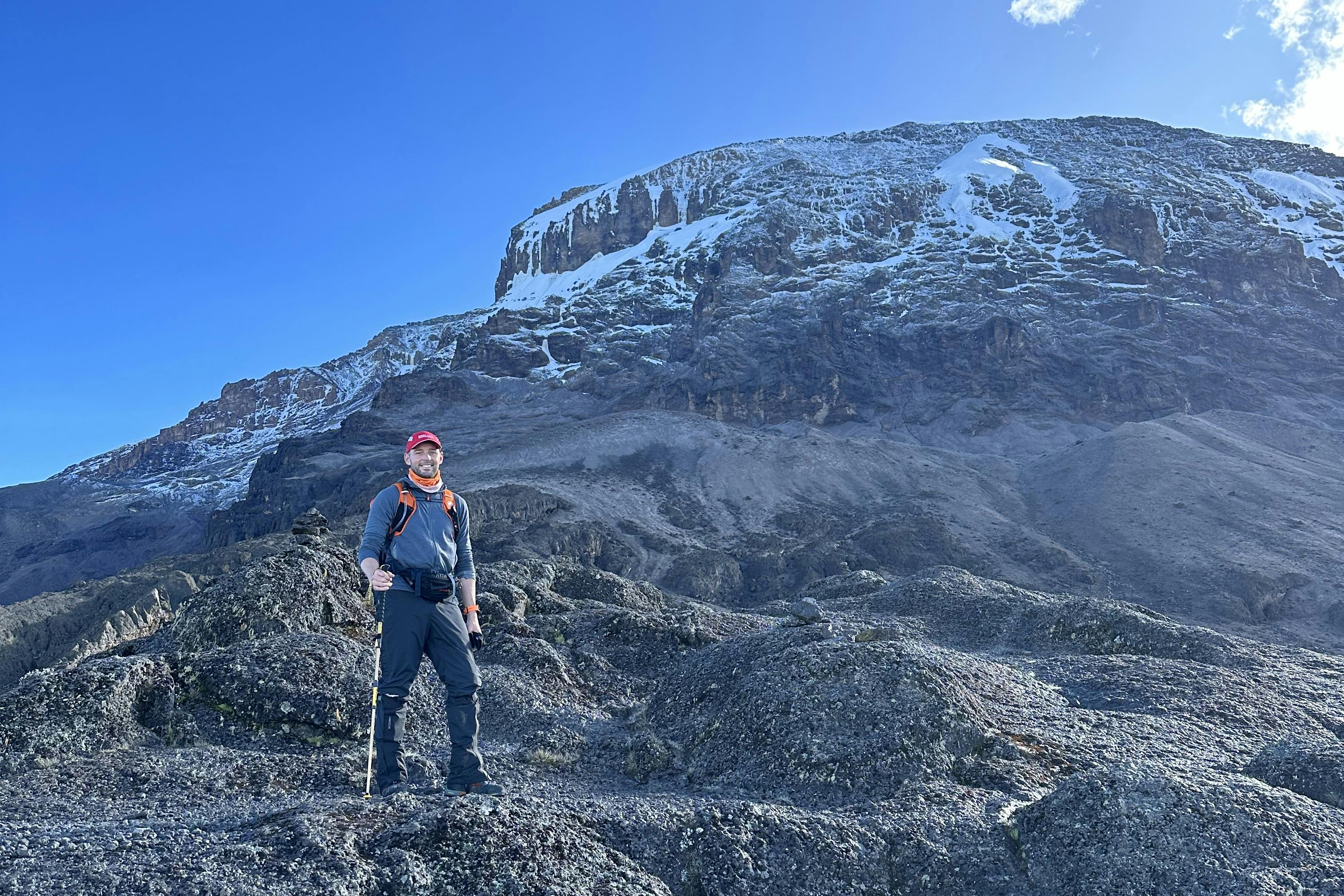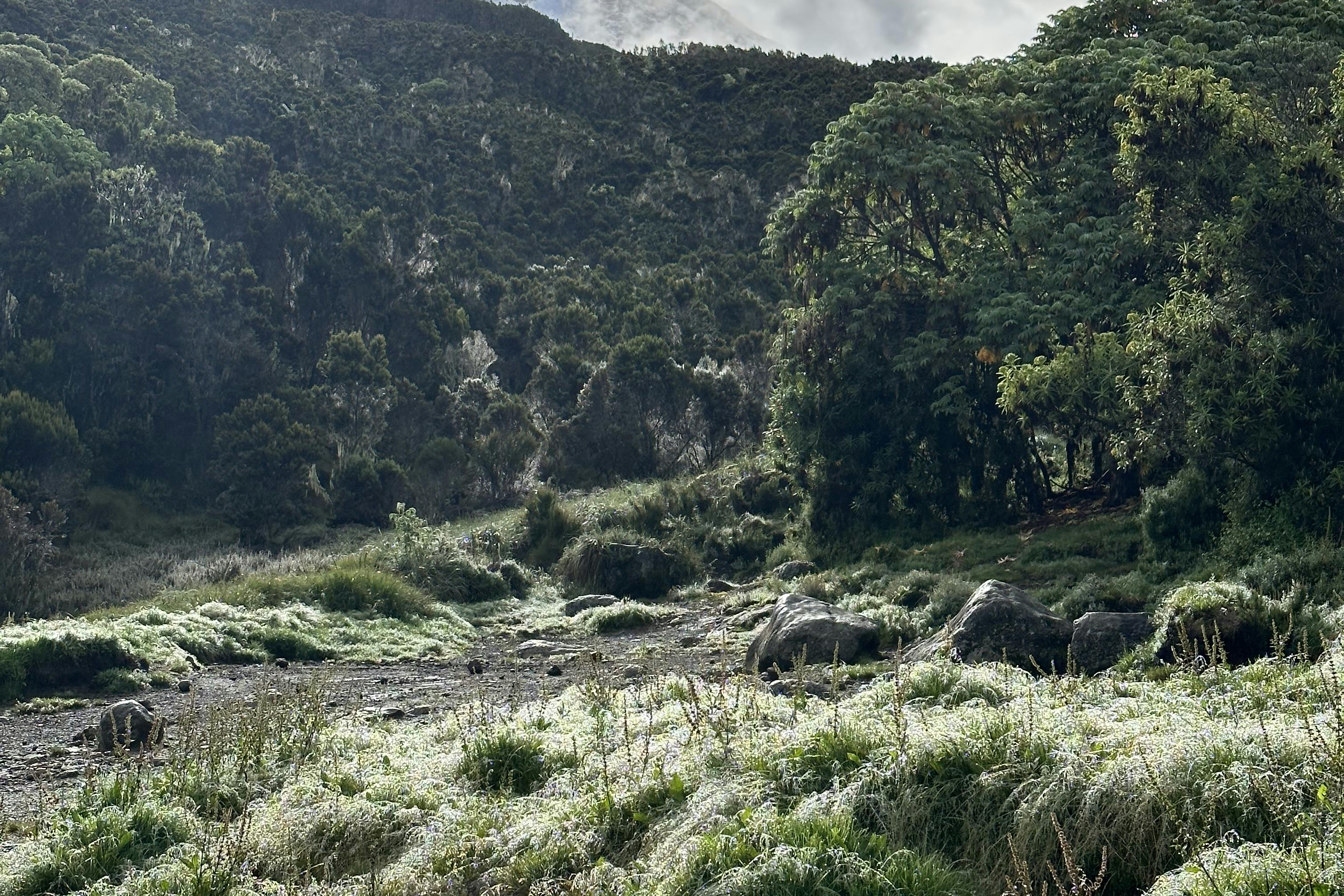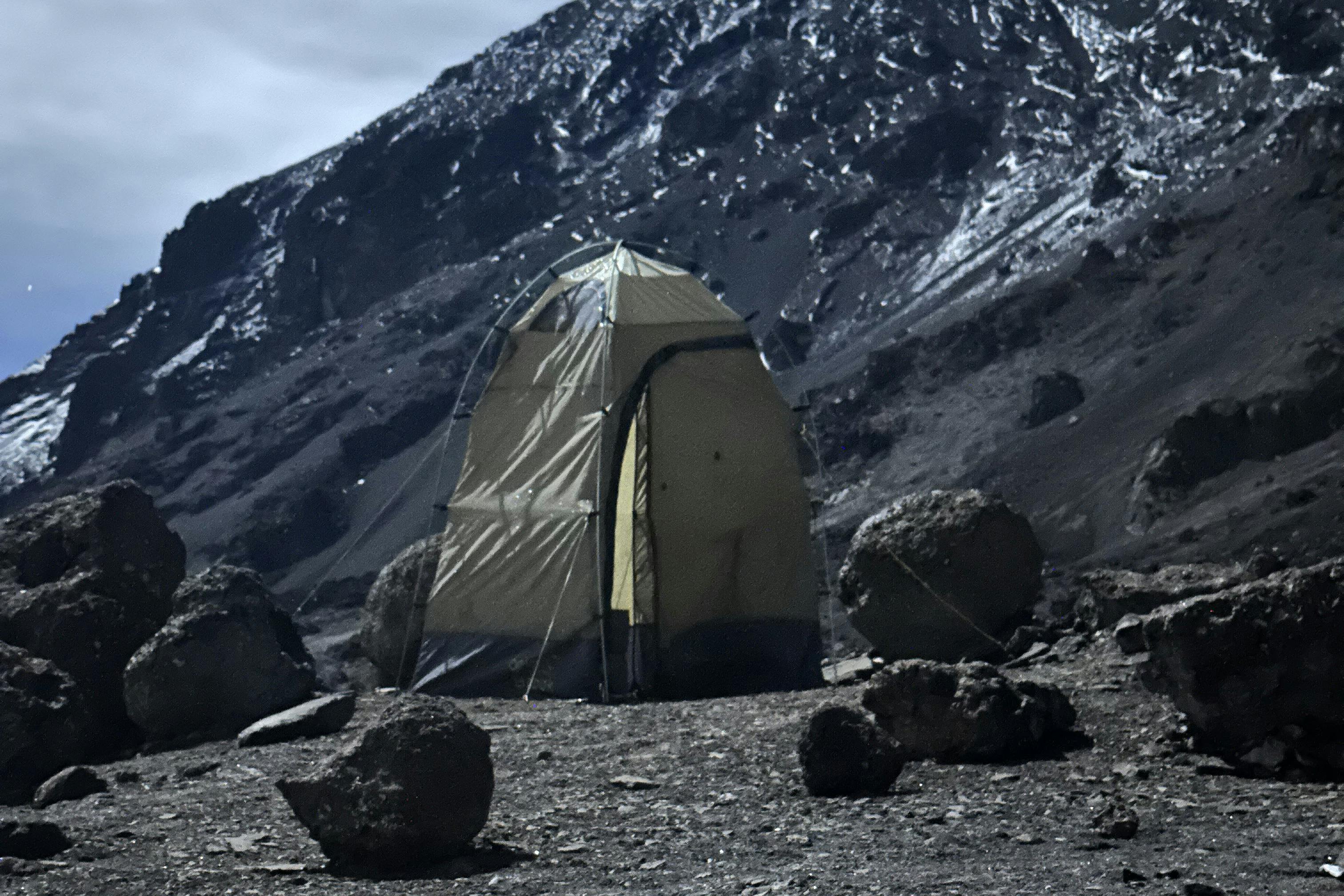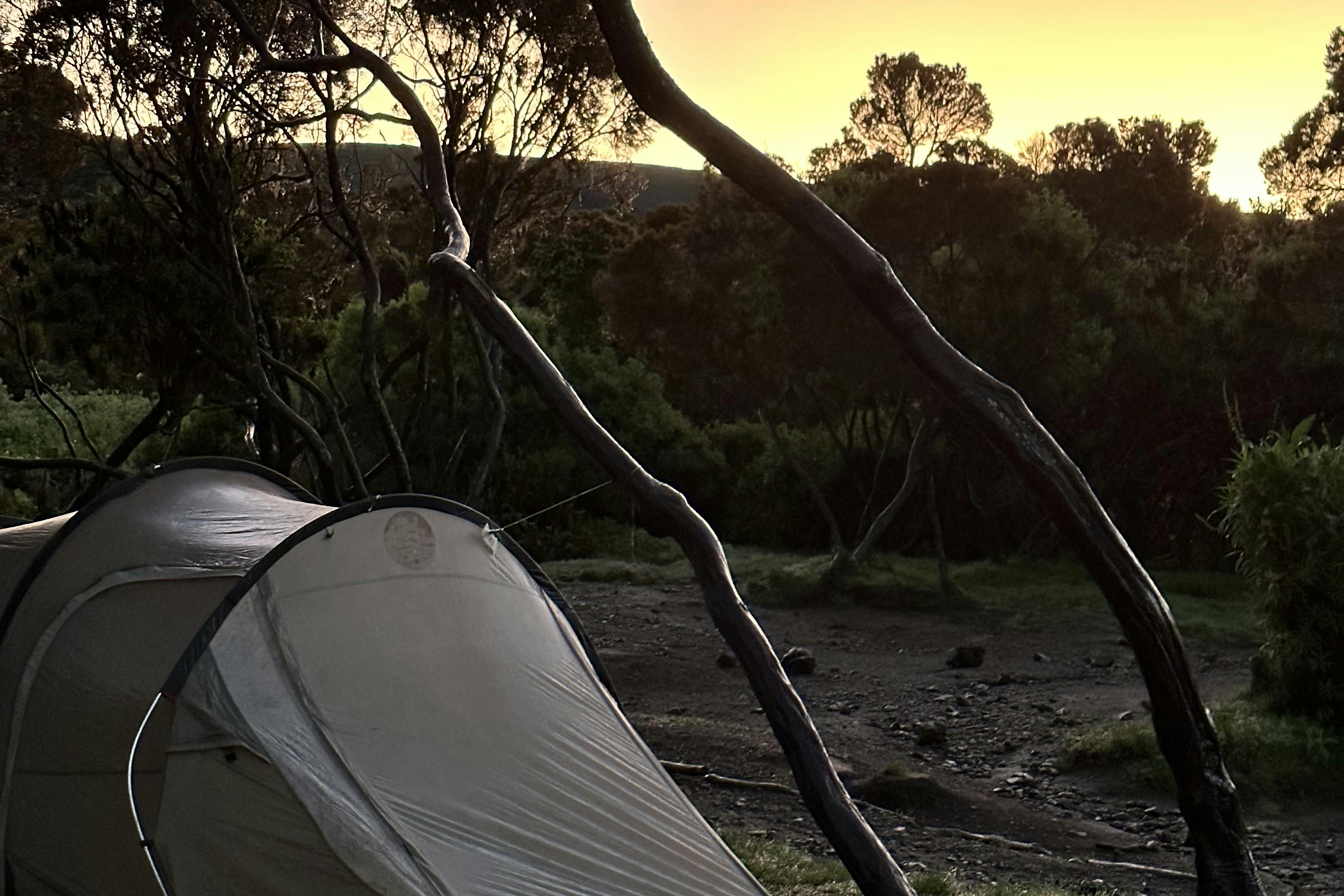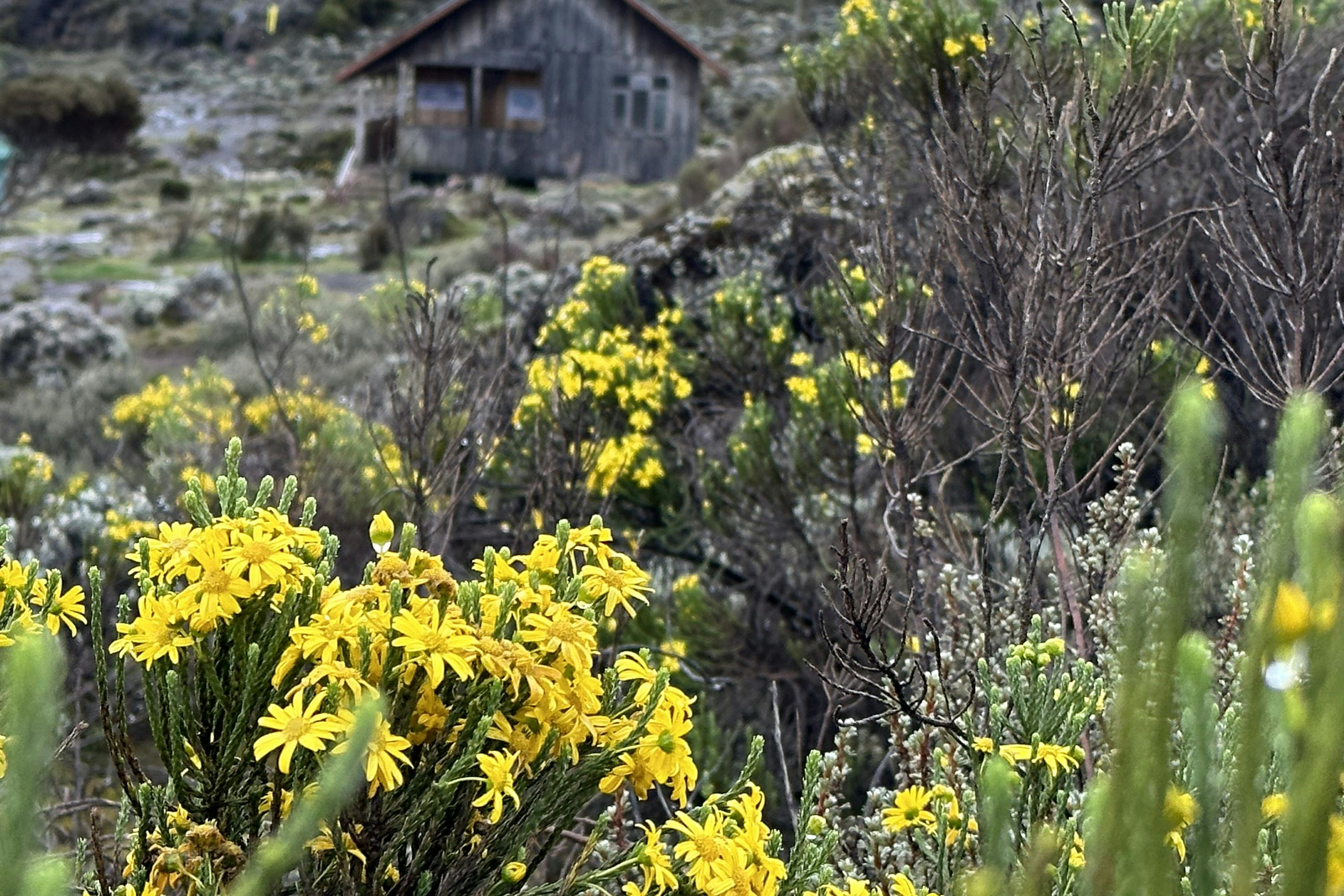Kilimanjaro Marangu (6 Day Route)
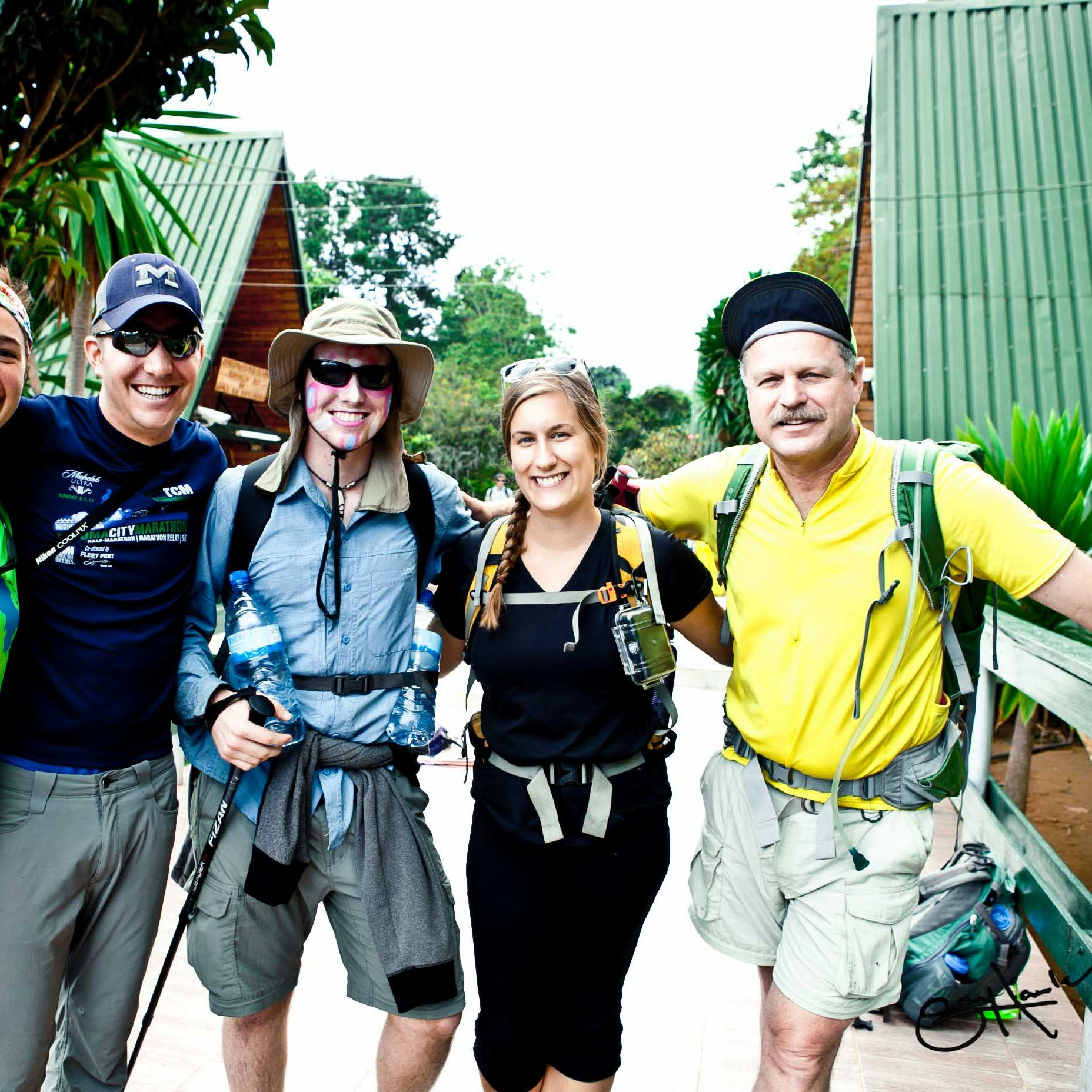

This trip is led by Holyfield and the guiding team in Tanzania.Meet your guides.
Itinerary
We pick you up from Kilimanjaro International Airport (JRO) and transfer you to your hotel in Moshi town, where you spend the night.
At the hotel, your guide will brief you on the upcoming trek and do an equipment check to make sure you have all the necessary mountain gear. If you're missing anything important, not to worry, we offer gear rentals.
After breakfast, we collect you from your lodge in Moshi and take you to the Marangu Gate. Here, we need to complete the necessary paperwork, then your trek can begin!
To start with, we hike through the dense rainforest. Besides the impressive vegetation, we might catch a glimpse of some primates as we head to the Mandara Hut.
After a well-earned rest, your guide can take you to the Maundi Crater, where you enjoy the wonderful view of the Kenyan interior.
Trekking distance: 8.3km / 5.2 miles (5–6 hours).
The day begins with an early breakfast before hitting the trails.
Shortly after leaving Mandara Hut, we reach the timberline and enter the heath and moor zone.
Approximately 4–6 hours later, the Horombo Hut will come into sight, standing at an altitude of 3,700m. From the hut, you will have fantastic views overlooking Mawenzi, Kibo, and the wide plains of the Masai steppe.
Trekking distance: 12.5km / 7.8 miles (8–9 hours).
Today serves as an acclimatisation day. The importance of this should not be underestimated as it greatly improves your chance of summit success.
After a relaxing breakfast, we take a 4-hour trek to the Zebra Rocks, which get their name from the distinctive black and white stripes.
When we return to Horombo Hut, a warm lunch is waiting. You can relax in the afternoon and regain your strength for the hike the following day.
Trekking distance: 5km / 3.1 miles (4–5 hours).
Today is a long and tough stage of the hike. The well-built trail passes the “Last Water Point”, which is followed by the so-called “saddle”. This nearly vegetation-free plateau joins the main summit, Kibo, with Mawenzi.
Today’s destination is the Kibo Hut. Here, we enjoy an early evening meal followed by an early night to get some rest before a midnight trek.
Trekking distance: 9.5km / 5.9 miles (7–8 hours).
Today is “The Big Day” – the summit stage. We begin our final ascent around midnight. It's going to be long and strenuous.
Passing the Hans Meyer Cave at 5,220m, we make our way slowly but surely upwards.
At sunrise, we hope to reach Gillman’s Point (5,681m) – the crater rim of Kilimanjaro – where the sun will slowly start to warm up the land.
After a further hike of 1–2 hours, we reach Uhuru Peak (5,895m).
On your return to Kibo Hut, a warm meal awaits you. We take a 1-2 hour break before proceeding down to Horombo Hut.
Trekking distance: 22km / 13.7 miles (12–15 hours).
The last stage takes us back through the heath and moor zone to the Mandara Hut (2,700m), which we should reach in time for lunch.
On our descent, we once again pass the tropical rainforest. After 6 hours of trekking, we arrive back at the Kilimanjaro National Park Gate (1,860m).
After saying goodbye to your mountain guides, it's a short transfer back to your hotel in Moshi. Once there, you can take a warm and relaxing shower and celebrate crossing Kilimanjaro off your bucket list.
Trekking distance: 20.8km / 12.9 miles (7–8 hours).
Today is free to wind down after the trek and prepare for your flight home.
Depending on your flight times, you may want to explore Moshi town and grab some souvenirs before heading to the airport.
If you can spare an hour, we welcome you to plant a tree. This forms part of our environmental conservation efforts in the Kilimanjaro region.
Your Guides
This trip is led by an experienced Tanzanian guiding team that's grown to be one of the country’s most respected adventure operators. Founder, Cuthbert, is a veteran mountain guide whose career began on Kilimanjaro’s trails in the late 1990s. Alongside his wife Stella, he has built a team of certified mountain and safari guides who know these landscapes intimately. Beyond guiding, the team is passionate about giving back. They actively support education, healthcare, and environmental conservation in the Kilimanjaro region, while championing sustainable tourism that benefits local communities.

Book Now
No dates currently available to book
Don't see your date? We may be able to open a new group or setup a private trip if there are 2 or more people in your party. Contact us.
What's Included
Included
- Professional mountain guides, cooks, and porters.
- Accommodation (hotel in Moshi, mountain huts on the 6-day trek).
- Park and trekking permits.
- Tents, sleeping bags, and mats.
- Airport transfers on the first and last day of the trip.
- 3 meals a day during the trek (breakfast, lunch, and dinner).
- Dinner on Day 1 and Day 7 and breakfast on Day 8 at the hotel in Moshi.
- Filtered water during the trek.
Not Included
- International and local flights.
- Tips and gratuities.
- Lunch on the first and final day.
- Personal travel/rescue insurance.
- Visa fees.
- Single supplement: US$90 per person (optional).
- Portable toilet: US$150 per group (optional).
Rated 5.0
36 verified reviews
Karen
(Aug 2023)
David
(Aug 2023)
Edward
(Apr 2023)
Ashlie
(Feb 2023)
Evelin
(Feb 2023)
Rebecca
(Feb 2023)
Ria
(Jan 2023)
Johnnie
(Jan 2023)
FAQs
Before you go
Despite being only 6 days, the Marangu route is not easy. Kilimanjaro is a steep mountain with a long summit day. You'll need to be in good physical condition and fit enough to hike for up to 12 hours a day. The high altitude and low oxygen levels make this trek more challenging. To train, we recommend running or playing sports at least two to three times a week. It's also great to do a few practice hikes with a 5kg rucksack.
We recommend that you check with your personal healthcare advisor or travel doctor before your trip to Africa. We have provided a useful link below where you can find the latest NHS advice for travel in Tanzania.
The following is a packing list for Kilimanjaro: Documents: • Passport • Travel insurance details • Boarding passes for flights • Two passport photos • Driver’s license (if needed) • Cards and cash Gear and clothing (please make sure that you have non-cotton clothing for trekking): • Sleeping bag liner (optional) • Trekking boots: all-season, lightweight • Two base-layer t-shirts (e.g. running t-shirts) • Fleece/soft-shell jacket • Waterproof jacket • Down jacket for warmth • Travel clothes and city wear • Underwear • Base-layer trousers (optional) • Waterproof trousers • Trekking trousers • Trekking shorts (optional) • Multiple pairs thick wool mountaineering socks • Lightweight and breathable trekking socks • Gloves and wool hat • Small daypack (35l capacity is generally fine) • Duffel or rucksack with straps to go over your back • Dry Liner or Dry Bag • Water bottle/thermos: At least 2L. Nalgene bottles best. • Sunglasses • Suncream • General toiletries, contact lenses, glasses (if needed) • Towel • Electronics (head torch, travel adaptor, phone & charger) • Lip balm • Travel wash • Hand sanitiser, wet wipes • Trekking poles (optional) If you don't want to purchase your own kit or need to travel light, you can hire most of the equipment from our guides in-country. Get in touch for the list and rental prices. Please note that all plastic bags, regardless of their thickness, are prohibited from being brought into Tanzania. This excludes packaging for medical supplies.
When you go above altitudes of 2,500m (as is the case on Kilimanjaro), there is less oxygen which poses a risk of altitude sickness. High altitude sickness can happen to anybody, regardless of age or fitness. Symptoms vary between individuals but commonly include headaches, nausea, shortness of breath, and numbness in fingers and toes. These symptoms can come on unexpectedly and get severe quickly. To decrease the chances of experiencing altitude sickness, you need to allow your body time to acclimatise properly. Although impossible to completely prevent, we've designed our itineraries to give guests the best chance to adjust to the altitude changes. Ahsante guides have years of experience in recognizing and helping guests deal with altitude sickness. Note that oxygen is not used on Kilimanjaro to help guests reach the summit or to 'treat' altitude sickness. The only cure for altitude sickness is to immediately descend to lower ground. In severe cases, oxygen may be given to provide enough temporary relief to allow the affected guest to descend. In extreme cases, altitude sickness on Kilimanjaro can be fatal. We put your safety first. Our guides have years of experience, and their decision on whether or not to continue is final.
Most non-citizens need a Tanzanian tourist visa. This is easily obtained upon arrival. Tanzanian visas are also available online. Beware when purchasing your visa online, as there are illegitimate companies that try to sell them. Below is a link to the official Tanzanian High Commission UK website. While applying for a visa, you will need the following host company details: Full Name: Ahsante Tours & Safaris Limited Mobile number: +255759690257 Email: info@ahsantetours.com Company name/Registration number: 100817209 Physical address: Plot 29-A, Karanga Drive, Moshi – Kilimanjaro Accommodation (where you will stay): Panama Garden Resort Address: P.O.Box 6907, Lema Road
Yes, if you are travelling solo and would like your own room and tent for the duration of the trip, you can pay for a single supplement. The single supplement is an optional extra with a cost of $90 per traveller. This is payable in-country. Should you not wish to apply the single supplement, we will pair you with another group member to share accommodation during the trek (twin hotel room and shared tent).
One of the unique points on the Marangu route is the hut accommodation. It's the only route where you sleep in huts instead of camp in tents. The Mandara, Kibo, and Homboro huts provide shelter, sleeping quarters (in dormitory-style rooms), and dining facilities.
On your trip
You stay in a hotel at the beginning and end of the trek. The Marangu route is the only Kilimanjaro route where you will be sleeping in huts during the trek. Generally, the lodging is twin shared rooms and basic showering facilities. Single supplements are available for the duration of the trip for an additional $90. Please ensure you request this by messaging us before you depart. If you need to book any additional nights at the hotel, you can book using the link below.
Portable toilets are an optional extra. The cost for this extra service is $150, payable at our offices, in-country. The group can decide whether they would like this extra service and split the cost between group members.
It is customary in Tanzania to tip guides and porters. The amount that you tip is completely up to you. As a good rule of thumb, participants will generally tip around US$200 per customer (not per guide). You can give this to the head guide, and they will distribute it amongst the team of guides, porters, and cooks.
You have chefs with you on the hike who can cater to all dietary requirements. During the trek, you get three nutritious and filling meals each day to keep energy levels high. Please provide full details of any dietary requirements and allergies on your Trip Form. You will receive a link to fill this out shortly after booking. You can also update the form on your Skyhook dashboard. Note that lunch (at the hotel) on your first and final day is not included.
You start and end your tour with us at Kilimanjaro International Airport. On the first date of your trip, there are three available pick-up times (10:00 AM, 5:00 PM, or 11:59 PM). On the last day, you can fly out at any time. Your guides will arrange transfers that work best for the group. Guests typically fly with BA, Air France or Qatar. However, we'd recommend comparing a few airlines.
Every day on the trek we provide you with filtered water to fill up your bottles. The water is filtered and boiled by a Katadyn filtration system. We recommend you also bring water purification tablets or a filter bottle.
The Marangu route covers approximately 70 kilometres round trip. It takes 6 days to complete the trek, allowing for acclimatisation and gradual altitude gain.
Other FAQs
Most groups have 12 people, with a maximum of 14.
See above for inclusions and exclusions.
The currency used in Tanzania is Tanzanian Shillings. Some places will accept USD($). However, you will be given an unfavourable exchange rate if you pay in dollars.
Yes, of course! Safari in Tanzania is an amazing experience - simply message the Skyhook team before/after booking and we'll help you arrange a 2-7 day safari experience.
Kilimanjaro is very close to the equator, so the temperatures are very similar year-round. They can range from around 20°C(68°F) at the base to -10°C (14°F) on the summit. The dry season is June-September, and during these times, there is typically just a dusting of snow on the summit. These are also the busiest months. The wet season is Nov-May, where snow depth on the summit can regularly be 20-30cm.
The minimum age for this trek is 18 years.
Have a question
If you have any questions about this trip or want to speak with an expert, get in touch. We're ready to help.



Why Skyhook?
Join over 27,000 Skyhook adventurers who've used our platform to book directly with our vetted local guides, at local prices (we never markup).
Expert Local Guides
Experienced local guides, handpicked by us.
Best Prices
Never pay a markup on the local guide's price.
Exclusive Club
Earn loyalty rewards every time you travel.
Great Social Vibes
Small group tours provide a richer experience.
Stellar Feedback
Over 3,000 reviews, average of 4.9/5 stars.













